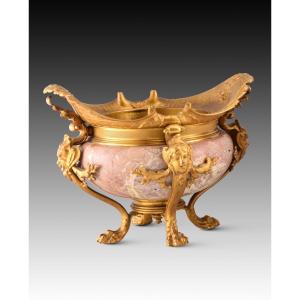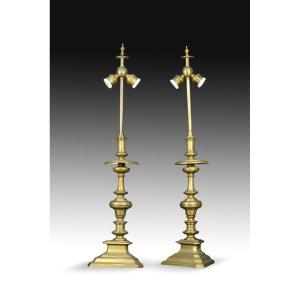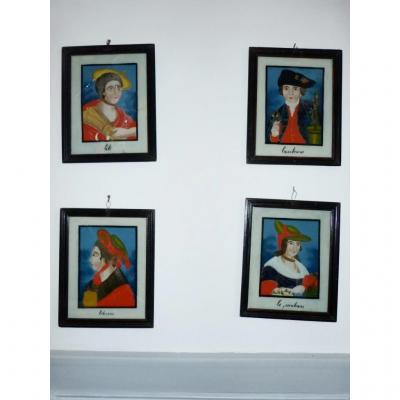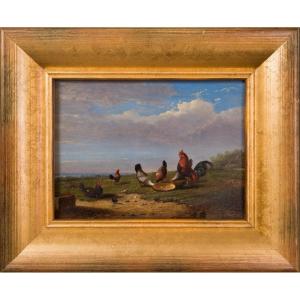It has some defects.
Framed glass plate beneath which is a painting, probably an oil painting. We can see a landscape in the background and a series of figures in the foreground, from the waist up. On the right, a man holds two women in his arms, while on the left, two semi-naked male figures attack a sea monster (very similar to those inspired by ancient Roman works, common in painting since the Renaissance). First of all, it is worth distinguishing two pictorial techniques that use glass: one that uses it as a support, like a canvas, and the other in which the glass is "above" the paint, the latter being applied "below" and inverted. This work belongs to the second method, highly prized in cabinetmaking for the decoration of chests, wastepaper baskets, etc., and for its similarity to enamel. It should also be remembered that glass painting was particularly appreciated by high society between the end of the 17th and the beginning of the 18th century. Ferdinando de' Medici, for example, included glass paintings by Luca Giordano in his collection in 1702. The disciples of this master specialized in those years in the decoration of important furniture with reverse glass painting. In 1679, for example, Giovanni Battista Tara was paid for creating “a pair of ebony writers’ tables inlaid with different glass paintings,” while Carlo Garofalo, a pupil of Luca Giordano and considered the best glass painter active in Naples in the second half of the 17th century, was called upon by Charles II of Spain to paint glasses for chests and other decorations in important royal salons; similarly, Domenico Coscia is mentioned in documents as a painter “who made very well those pieces of glass, which were used by writers.” The list of Neapolitan painters who were disciples of Giordano, known for their glass painting, can also be enriched with many other names, such as Domenico Perrone, Francesco della Torre or Andrea Vincenti. -
Dimensions: 41.5x2.5x18 cm. int: 8x32 cm






































 Le Magazine de PROANTIC
Le Magazine de PROANTIC TRÉSORS Magazine
TRÉSORS Magazine Rivista Artiquariato
Rivista Artiquariato